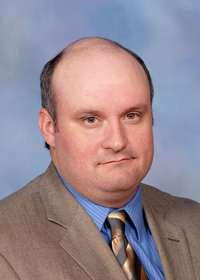Tree Injection With Reduced Labor Requirements
Forest managers have known for years that undesirable stems can significantly reduce growth of desirable crop trees. Mixed stands with 30 percent hardwood will have a 50 percent lower yield of pine timber. Controlling undesirable stems will not only produce larger and higher-quality trees sooner, it will also facilitate harvesting and enhance regeneration operations.
The economic impact of competing hardwood stems in pine management begins very early, but it becomes more evident when stands are 10 to 15 years old. For this reason, control is often delayed until these stems become too large for many of the cost-effective options.
Injection has long been recognized as a viable and cost-effective method for controlling large, undesirable stems. Typically, individual stem treatment becomes more cost-effective when hardwood density is less than 800 stems per acre. Injection is most effective on trees that are 3 to 4 inches in diameter, with no more than 250 to 300 stems per acre.
Historically, tree injection has been a labor-intensive practice. Estimates for productivity ranged from 0.2 to 0.5 acre per hour. Cost effectiveness was based on the intensive labor input associated with tightly spaced injection hacks.
Current injection methods allow for greater efficiency and are less labor intensive. This increased efficiency is a result of using fewer injections per tree and of applying the chemical imazapyr, which is sold as Arsenal Applicator’s Concentrate (Arsenal AC). By reducing the number of injections required per tree, this timber stand improvement operation becomes more cost-effective because the labor expense is reduced.
Injection Method
The most notable feature of an injection method is the number of times a stem is “hacked” or cut. In traditional systems, no more than 1 inch between cuts was allowed, and typically cuts overlapped around the stem. When injecting using Arsenal AC, the number of cuts is based on the diameter of the stem at breast height (DBH), or 41⁄2 feet above the ground.
The only equipment necessary is a hatchet and a spray bottle with an adjustable spray nozzle. The nozzle should be set to optimize the placement of herbicide solution in the “frill” created by striking the stem with the hatchet. The spray solution should be mixed at 20 percent Arsenal AC and 80 percent water. Check the calibration of the applicator bottle to ensure that 1 to 11⁄2 milliliter of solution is applied to each frill. The number of hacks to be used is described in Table 1.
|
Tree DBH |
Number of injections |
|---|---|
|
1–3 inches |
1 |
|
4–6 inches |
2 |
|
7–9 inches |
3 |
|
9–12 inches |
4 |
For comparison, a 4-inch (DBH) stem might receive as many as 10 injections using conventional systems. Time, labor, and the amount of herbicide required have been drastically reduced using current methods.
Imazapyr is a slow-acting herbicide. Consequently, you should evaluate injected stems for two growing seasons after application. Typically, there will be a substantial difference between the control observed in year 1 and year 2 of evaluation. In some situations, control may appear to be less than acceptable after the first growing season, but trees are usually dead by the end of the second growing season.
Summary
The major points of interest for this timber stand improvement method include the following:
- One or two injections of imazapyr solution can effectively control most species up to 6 inches in diameter.
- The method requires little investment in equipment (only a hatchet and a spray bottle).
- The method requires much fewer labor inputs compared to traditional methods.
- The method can be used any time of year except during leaf-out in the spring, although best control is obtained if injections are performed between September and February (before leaf-out).
- Two growing seasons may be required before final results are seen.
- Landowners themselves can use the method, injecting as many stems as they desire at any time.
- The method is cost-effective.
- The method can be used to improve tree growth, enhance wildlife habitat, promote regeneration of desired species, and improve accessibility for recreational and management purposes.
Note: The current label on Arsenal AC has guidelines for injection at wide spacings. Always read and follow label directions when using any herbicide.
References
Cain, M. D. (1989). Hardwood control before harvest improves natural pine regeneration. USDA Forest Service, Resource Paper SO-249.
Langdon, O. G., & Trousdell, K. (1974). Increasing growth and yield of natural loblolly pine by young stand management. Proceedings, Symposium on Management of Young Pines. Alexandria, LA.
Miller, J. H. (1988). Herbicide technology: Its present and future role in re-establishing southern pine plantations. Proceedings, Second Rotation Plantation Establishment Workshop. Georgetown, SC.
Miller, J. H. (1989). Herbicide treatments can improve your forest. Forest Farmer, 48(5), 25–28.
Miller, J. H. (1991). Forest herbicide benefits and developments for intensive southern pine culture. Proceedings, Forestry and the Environment. Engineering Solutions. New Orleans, LA.
Nelson, L. R., & Miller, J. H. (1991). Forest herbicide technology. Forest Farmer, 50(3), 73–76.
Williamson, M., Miller, J. H., & Mistretta, P. A. (1989). Hand application methods for commonly used forestry herbicides in the South. USDA Forest Service Training Manual.
Williston, H. L., Balmer, W. E., & Abrahamson, L. P. (1976). Chemical control of vegetation in southern forests. USDA Forest Service, S&PF Forest Management Bulletin.
The information given here is for educational purposes only. References to commercial products, trade names, or suppliers are made with the understanding that no endorsement is implied and that no discrimination against other products or suppliers is intended.
Publication 3673 (POD-07-21)
Revised by Brady Self, PhD, Associate Extension Professor, Forestry; from an earlier edition by Andrew Ezell, PhD, Professor Emeritus, Forestry, and Larry Nelson, PhD, Associate Professor of Forestry, Clemson University.
The Mississippi State University Extension Service is working to ensure all web content is accessible to all users. If you need assistance accessing any of our content, please email the webteam or call 662-325-2262.




